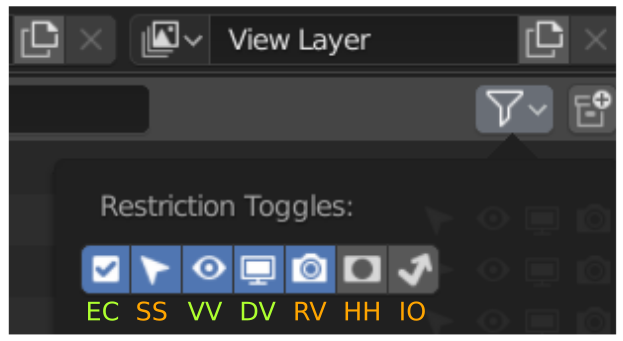Hi, Collection Manager dev here. 
Yes, this adds greater flexibility, and so a greater chance of misuse, but I think this isn’t necessarily a problem and in some situations it might be useful.
I actually think the collection/view layer paradigm works pretty well. Yes, there are some problems with the implementation, but the overall idea, I think, is a good one. If you think about it, it makes sense to allow stuff to operate on a whole collection, whether for scene setup or rendering, and it’s also nice to have the ability to have multiple configurations for scene setup (and this is essential for rendering). In the end, you want an encompassing “layer” for both scene management and rendering, and since the toggles can live happily side by side I don’t see a problem combining the two. You could separate them out into Scene Layers and Render Layers, but I think this adds needless complexity. I will say that the Restriction Toggles are not presented in the clearest and most efficient manner and could do with some improvement, and their tooltips could certainly use some work (as indicated by two separate patches currently sitting in the tracker), but overall I think they do an okay job.
I will say that grouping should not be handled by collections, but by actual groups, and this whole issue could definitely use work.
I’ll agree that for some things it would be much easier/better to have them as default in blender, but for a lot of things the Collection Manager does very well. And, of course, a default implementation could have better visual indicators of states and stuff like that (however, it is possible to draw everything yourself in OpenGL from an addon, so technically adding better visual indicators is not impossible. It would be a lot of work and quite possibly not a good idea, but it’s not impossible). Even if everything were added to the Outliner I would still want a collection managing popup in the 3D View. And for things like QCD, I think it wouldn’t be done much differently for default blender (they might even do it as an addon).
I will agree, though, that in principal, the basics should not have to be solved by addons from outside the main development team.
Well, I’m not despairing yet! 
And an addon gives us a wonderful playground for testing out and designing advanced management systems which can then, potentially, be added to blender (at the very least there will be a battle tested reference of what we want, that we can point to).
Well, devs have a lot on their plate, and while that doesn’t mean they’re perfect, or can’t be annoying at times  , we should remember that and try to cut them a little bit of slack.
, we should remember that and try to cut them a little bit of slack.
From reading through this thread, and others like it, there seems to have been lots of discussion on why improvements are needed or that things are “a bit of a mess”, but less concrete discussion of exactly what’s needed and how it should behave. As a developer, I may not always understand at first why something is needed, but if I’m told clearly how something should behave, it helps.
Of course sometimes the devs just don’t get it/agree with us, and there’s not much we can do about that.
The QCD system actually came about because I was reading this thread and I knew that the devs weren’t understanding what @1D_Inc was talking about, but I did, and I knew that it could be solved as an addon and would incorporate well with the Collection Manager, so I made a prototype and we developed it into something wonderful.
I wouldn’t say that we are very limited in what we can do. There are limitations, but I think we have done very well so far. I have seen some truly amazing things done by addons, so I would say that the skill level of the developer is more important than whether it’s an addon.







